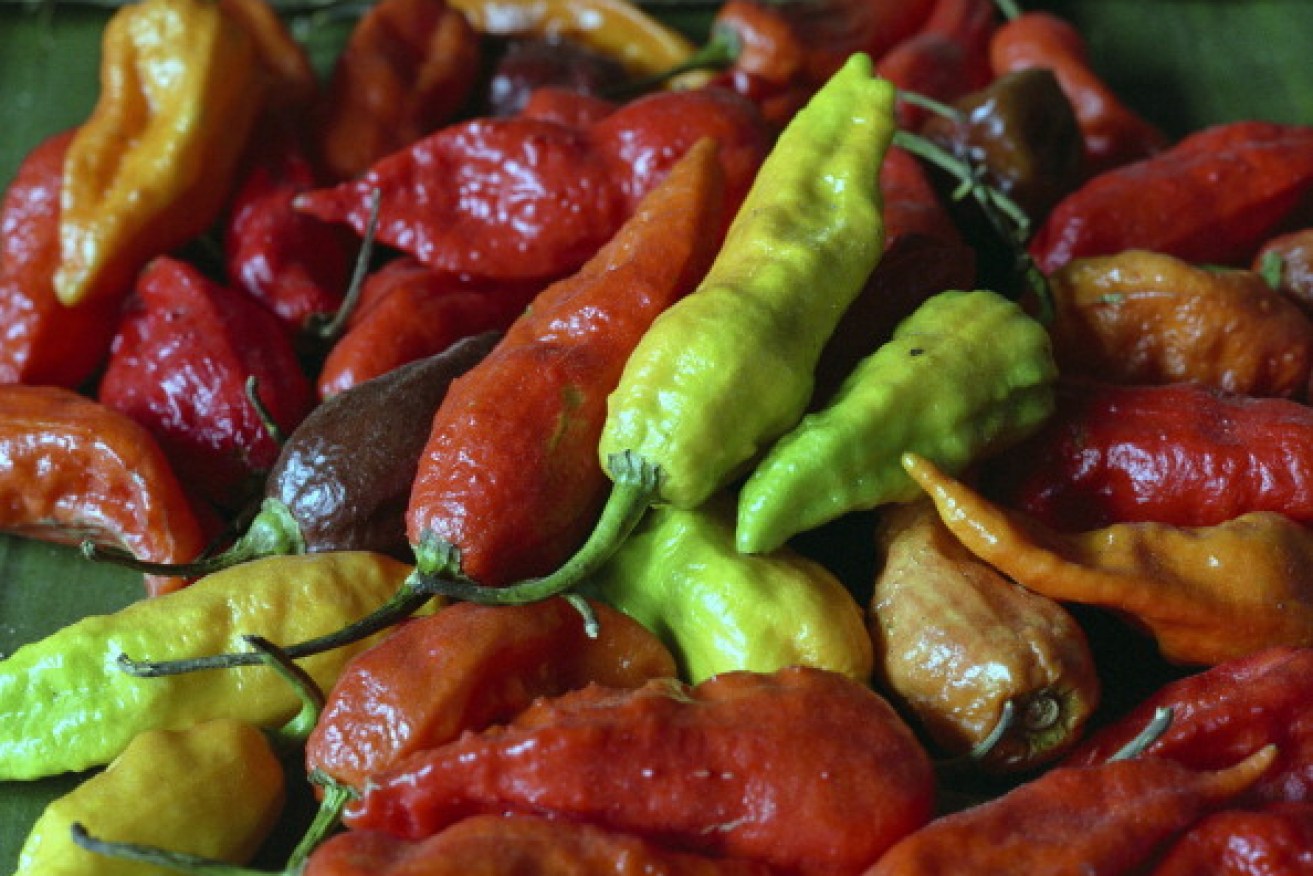Carolina Reaper: The hottest chilli in the world

Chilies are a common staple for cooking chutneys and curries. Photo: Getty
A 34-year-old man developed an excruciating ‘thunderclap headache’ after he ate the hottest chilli pepper in the world.
What is the hottest chilli in the world?
The Guinness Records has announced the Carolina Reaper is the World’s Hottest Pepper.
It has been the number one hottest chilli since 2013.

At full growth, one Carolina Reaper fits into half the palm of a hand. Photo: ABC/Wikipedia
At its peak, the Carolina Reaper has a heat of 2.2 Million SHU. SHU is an acronym for the Scoville heat unit that is a measurement of the pungency of hot foods.
The Carolina Reaper is 20 times hotter than a habanero or 600 times hotter than a jalapeno.
It is described as having a fruity taste but the initial bite is sweet. After a few minutes the chilli becomes extremely hot.
- Trinidad Moruga Scorpion
- 7 Pot Douglah
- 7 Pot Primo
- Trinidad Scorpion Butch T
- Naga Viper
- Bhut Jolokia (Ghost Pepper)
- 7 Pot Barrackpore
- 7 Pot Red (Giant)
- Red Savina Habanero
How do you measure the spiciness of foods?
Spicy foods are measured by the Scoville scale that was named after its creator Wilbur Scoville in 1912.
The scale is a measure of the concentration of the chemical compound capsaicin. This is a component that produces a heat sensation for humans.
Scientists separate the capsaicinoids from the peppers and according to Gizmodo they “use liquid chromatography to detect the exact amount of the compounds”.
This formula then converts the readings onto the Scoville scale.
What are some spicy food remedies?
There are household remedies that can decrease the spiciness of different foods.
- Dairy: A protein in dairy called casein can break down the capsaicin and soothe the burning feeling in one’s mouth.
- Chocolate: The high fat content in chocolate will help remove the capsaicin. It is more soluble in fat than water-based solutions.
- Bread or rice: Starch provides a natural barrier between the spice and your mouth.
- Sugar or honey: These foods are absorbed into the oil-based capsaicin decreasing the spicy taste.
- Tomatoes and lemons: These alkaline foods can neutralise the acidity of spice.








